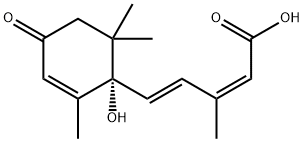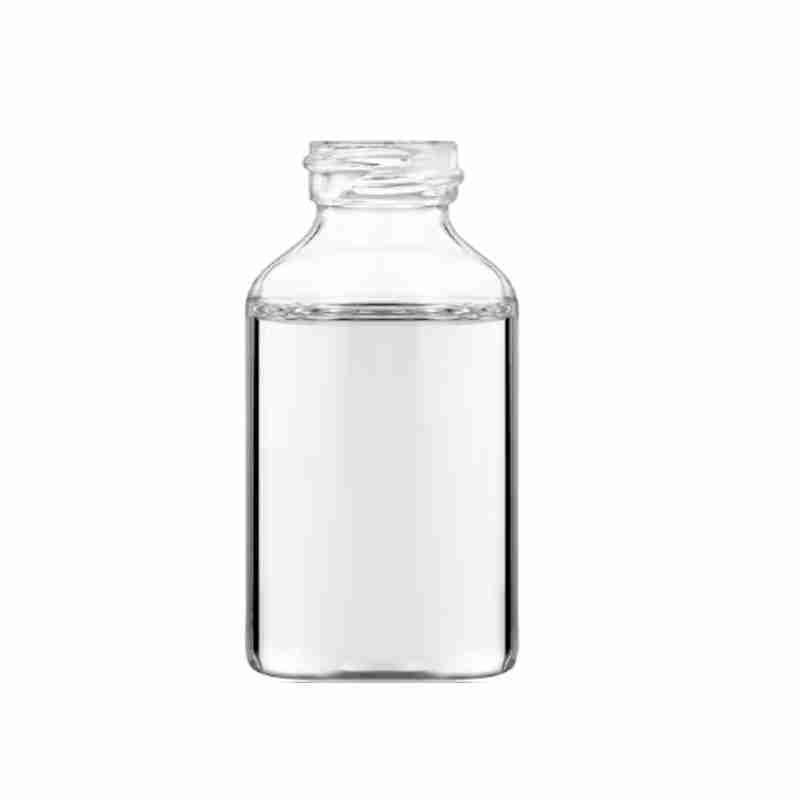Abscisic Acid CAS #21293-29-8
S-Abscisic Acid (ABA) is a plant hormone, also known as Abscisic acid, named after it was originally thought to promote plant leaf abscission. It plays a role in multiple developmental stages of plants. , in addition to promoting leaf shedding, there are other effects, such as inhibiting growth, promoting dormancy, promoting the formation of potato tubers and plant stress resistance.
In fact, abscisic acid is only found in a small number of plants in promoting leaf abscission. abscisic acid can also be synthesized in some phytopathogenic fungi, but it is different from the synthesis pathway in plants. At present, the production of high-purity abscisic acid has been successfully produced by fermentation of Botrytis cinerea on a large scale. Products, and are widely used in agricultural production, disaster prevention and mitigation, ecological vegetation construction, afforestation, urban landscaping and other fields.
发送询盘
Abscisic Acid CAS #21293-29-8
| (+)-Abscisic acid Basic information |
| Product Name: | (+)-Abscisic acid |
| Synonyms: | (ABA)ABSCISIC ACID >98%;(+)-Abscisic acid;ABA, Dormin, (S)-5-(1-Hydroxy-2,6,6-trimethyl-4-oxo-2-cyclohexen-1-yl)-3-methyl-(2Z,4E)-pentadienoic acid;S-(+)-ABA;(S)-(+)-ABSCISIC ACID;[S]-5-[1-HYDROXY-2,6,6-TRIMETHYL-4-OXOCYCLOHEX-2-EN-1-YL]-3-METHYL-[2Z,4E]-PENTADIENOIC ACID;(+)-abscisinii;(+)-cis-abscisicacid |
| CAS: | 21293-29-8 |
| MF: | C15H20O4 |
| MW: | 264.32 |
| EINECS: | 244-319-5 |
| Product Categories: | plantgrowth;Agro-Products;Sesqui-Terpenoids;Plant Hormones;Chiral Reagents;Biochemistry;Plant Growth Regulators;Plant Growth Trgulators (Others);Pharmaceutical Raw Materials;Inhibitors;Plant Growth regulator;21293-29-8 |
| Mol File: | 21293-29-8.mol |
 |
|
| (+)-Abscisic acid Chemical Properties |
| Melting point | 188 ??C |
| alpha | D20 +411.1?? (c = 1 in ethanol); D20 +426.5?? (c = 1 in 0.005N methanolic H2SO4) |
| Boiling point | 327.55??C (rough estimate) |
| density | 1.0583 (rough estimate) |
| refractive index | 410 ?? (C=0.2, EtOH) |
| storage temp. | 2-8??C |
| solubility | Chloroform (Slightly), Ethanol (Sparingly), Methanol (Slightly) |
| pka | 4.87??0.33(Predicted) |
| form | Off-white powder |
| color | White to Pale Yellow |
| optical activity | [??]/D 415??10??, c = 0.1 in ethanol |
| Merck | 14,11 |
| BRN | 2698956 |
| Stability: | Light Sensitive |
| InChIKey | JLIDBLDQVAYHNE-WEYXYWBQSA-N |
| LogP | 1.896 (est) |
| CAS DataBase Reference | 21293-29-8(CAS DataBase Reference) |
| EPA Substance Registry System | 2,4-Pentadienoic acid, 5-[(1S)-1-hydroxy-2,6,6-trimethyl-4-oxo-2-cyclohexen-1-yl]-3-methyl-, (2Z,4E)- (21293-29-8) |
- 2
- 2-diallylpent-4-en-1-amine
- 4
- 95-16-9
- Ammonium sulfamate
- Benzothiazole
- cas:67889-00-3ح2
- cas:83524-75-8 | pigment black 32
- cas:928836-00-4 | 2
- cas:932745-70-5 | 4
- Chemical Minerals
- Coconut diethanolamide
- Daily Chemicals
- discount
- for sale
- General pvc resin
- hexyl D-glucoside
- in stock
- Lauramidopropyl betaine
- LAURIC ACID MONOETHANOLAMIDE
- Petroleum Additives
- Plasticiser
- Ploymers
- price
- PVC
- quotation
- Raw Materal
- Remove term: Petroleum Additives Petroleum Additive
- SODIUM ETHYL 2-SULFOLAURATE
Related Products
Chemical Name: Zinc citrate
Synonyms: Zinc citrate trihydrate
CAS No.: 546-46-3
Molecular Formula: C6H8O7Zn
Molecular Weight: 257.5
Appearance: White powder
Silicones are a family of synthetic polymers known for their versatility and stability. They are heat-resistant, non-toxic, and have excellent electrical insulation properties. Commonly used in various industries such as construction, automotive, aerospace, and personal care products, silicones offer a wide range of applications from sealants and adhesives to lubricants and medical devices. Their resistance to extreme temperatures and weathering makes them a preferred choice for many high-performance applications.
Succinimide is a heterocyclic organic compound and an important industrial chemical. It serves as a key intermediate in the synthesis of various pharmaceuticals, agrochemicals, and other specialty chemicals. Known for its reactivity and versatility, succinimide is widely used in the production of succinic anhydride, a precursor to many polymers and plasticizers, highlighting its significance in the chemical industry.
N,N-Dimethylaniline is an organic compound with amine and methyl groups attached to a benzene ring. It is a colorless liquid with a characteristic amine odor. This compound is primarily used as a chemical intermediate in the synthesis of dyes, pigments, and polymers. Its reactivity makes it a valuable building block in the production of various organic compounds, particularly in the pharmaceutical and chemical industries.
Ethylhexyl Palmitate is a skin-conditioning ester, derived from ethylhexanol and palmitic acid, that imparts moisturization and a smooth texture to cosmetic and personal care formulations. It is valued for its emollient properties, enhancing the sensory experience of skin care products.
Polyhexamethylene guanidine hydrochloride, often abbreviated as PHMG-HCl, is a high molecular weight polymeric biguanide compound known for its potent antimicrobial properties. With a chemical structure that features a long chain of methylene groups bridged by guanidine units, PHMG-HCl is effective against a broad spectrum of microorganisms, including bacteria, viruses, and fungi.
This hydrochloride salt form of PHMG is highly soluble in water and is commonly used in various applications due to its non-irritant and non-toxic nature to human skin and mucous membranes. It is widely recognized for its ability to form a colorless and odorless solution, making it an ideal choice for use in personal care products, medical disinfectants, and water treatment processes.
The versatility of PHMG-HCl lies in its cationic nature, which allows it to bind to negatively charged microbial cell walls, disrupting their integrity and leading to cell death. This mechanism of action contributes to its effectiveness as a preservative and disinfectant. Moreover, its substantivity, or the ability to adhere to surfaces, enhances its long-lasting antimicrobial activity.
In summary, Polyhexamethylene guanidine hydrochloride is a reliable and efficient antimicrobial agent, pivotal in industries where hygiene and cleanliness are paramount, offering a safe and sustainable solution for microbial control.
Octocrylene is an organic compound widely recognized for its potent UV-filtering properties, making it an essential ingredient in sunscreens and other skincare products designed to protect the skin from harmful ultraviolet radiation. With the chemical name 2-(4-Methylbenzyl)-2H-benzotriazole-5-methyl, octocrylene is a stable and photostable molecule that provides broad-spectrum protection against both UVA and UVB rays.
This oil-soluble chemical is valued for its ability to absorb UV radiation effectively, converting it into heat without causing skin irritation or staining clothes. Octocrylene is often used in combination with other UV filters to enhance the sun protection factor (SPF) of formulations, ensuring a balanced and comprehensive defense against sun damage.
As a lipophilic compound, octocrylene is compatible with various cosmetic and dermatological formulations, contributing to the development of lightweight, non-greasy sunscreens. Its chemical structure allows for a high degree of safety and efficacy, making it suitable for a wide range of skin types, including sensitive skin.
In summary, octocrylene is a reliable and efficient UV filter, pivotal in the formulation of modern sunscreens that offer advanced protection against the sun’s harmful effects while maintaining skin comfort and product aesthetics.
Product name:Cyclopentane
Purity:96%
Appearance:White powder
Package:25kg/bag
Sample:Available
Chemical Name: STODDARD SOLVENT
CAS No.: 64742-88-7
Appearance: Colorless or Light Yellow Liquid
1-Octanol, also known as Capryl alcohol or n-Octanol, is a clear, colorless liquid with a characteristic waxy odor. It is an alcohol with eight carbon atoms in its chain, making it a part of the aliphatic alcohol family. This compound is poorly soluble in water but is miscible with ethanol, diethyl ether, and chloroform . It has a melting point of approximately -15??C and a boiling point of around 196??C . 1-Octanol is used in the production of esters, plasticizers, and as a solvent or intermediate in the synthesis of various organic compounds. It also finds application in the fragrance industry as a fixative in perfumes and can be used in the formulation of flavor and scent compositions . It is important to note that 1-Octanol is flammable and should be handled with care, storing it away from sources of ignition and heat .
Chemical Name: Imazalil Sulfate
CAS No.: 58594-72-2
Molecular Formula: C14H14Cl2N2O.H2SO4
Molecular Weight: 395.26
Appearance: Solid
Chemical Name: UV-120
Other Name: (2’,4’-Di-tert-butylphenyl 3,5-di-tert-butyl-4-hydroxybenzoate)
CAS No.: 4221-80-1
Molecular Fomula: C29H42O3
Molecular weight: 438.66
Assay: ≥99%(LC)



















